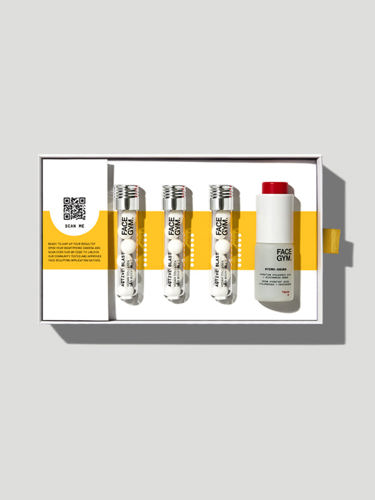
Welcome to our series "Buzzy Beauty Ingredient of the Moment," the premise of which is pretty self-explanatory: In each installment, we'll explore an ingredient that's currently trending in the industry, springing up in a variety of different products lining the beauty aisle. We'll consult experts to find out about the science behind it — and why it's having a major moment right now.

I'm in a love-hate relationship with acne products. Spot treatments and harsh toners get the job done — they shrink zits and tackle hormonal breakouts — but they're a little overbearing for my sensitive skin. I've been burned (literally) by retinols and glycolics, so sometimes I just let a pimple run its natural course. As in, dab on concealer and hide the magnifying mirror for a few days. The alternative is clearer skin with a fiery, flaking face. I had a chin pimple on my wedding day. That day, I said "I do" to concealer.
So I've been intrigued by an ingredient that's been popping up in skin care lately: succinic acid. Don't let the word "acid" fool you. Most acne-fighting acids are intensive chemical exfoliants, but succinic possesses powerful anti-inflammatory, antibacterial and antioxidant properties. This water-soluble acid, also known as butanedioic acid, has a bevy of skin benefits, and it fights acne strategically — by soothing skin, killing bacteria and decreasing inflammation. Basically, it kills with kindness.
Given that acne is usually the product of bacteria, succinic acid is great at tackling existing blemishes — but it also helps prevent future breakouts. It naturally inhibits Propionibacterium acnes, a bacteria that's been proven to play a significant role in causing breakouts.

"Succinic acid is the unicorn acid, because it really does work skin-transforming magic," says Inge Theron, founder of British skin-care brand FaceGym. "Unicorn acid" might sound like a '90s rave drug, but the term of endearment is otherwise a big coup for Team Succinic.
From a product-developer standpoint, the acid is revered for its ability to blend with a variety of formulas and actives. Dr. Ava Shamban, a board-certified dermatologist based in Los Angeles, notes that it can be mixed with other antioxidants and ingredients like hyaluronic acid, salicylic acid, retinoids and even sulfur. Celebrity facialist Olga Lorencin, founder of her own eponymous skin-care line, claims that it "has a nice nice effect when you mix it with lactic acid. It's gentler than glycolic, so it can sit on the skin all night without irritation."
Succinic acid also works wonders if combined with other acid molecules. For example, when mixed with salicylic acid, it can help exfoliate pore-clogging dead skin cells while killing bacteria and decreasing inflammation. (This combo can be found in FaceGym Skin Changer 2-in-1 Exfoliating Essence-toner.) Salicylic acid alone tends to irritate skin and exacerbate redness — it's certainly not associated with a calming effect. "It can be a nightmare for those who suffer from sensitivity," says Theron. "Succinic acid doesn't cause a huge spike in the skin pH, so skin is less likely to become as sensitized or suffer from irritation."
Unlike other acne spot treatments, succinic acid formulas tend to be non-drying, so you don't get that flaking effect. Translation: seamless concealer coverage. The Inkey List Succinic Acid Treatment (2% succinic acid, 2% sulfur and 1% salicylic acid) is so mild, you can apply it up to three times a day, an unthinkable concept for many other acne treatments.
Shop now:https://facegym.com/
https://fashionista.com/2023/06/succinic-acid-acne-treatment-products
